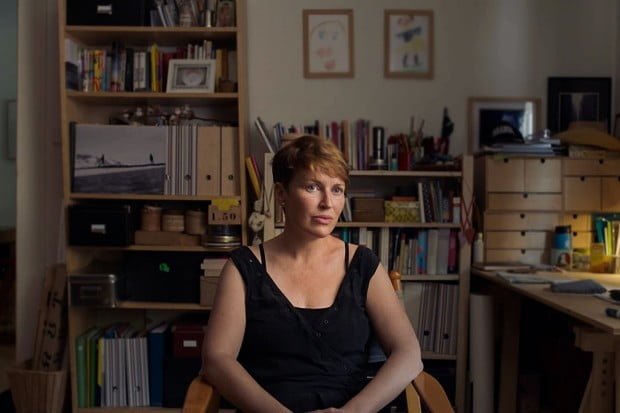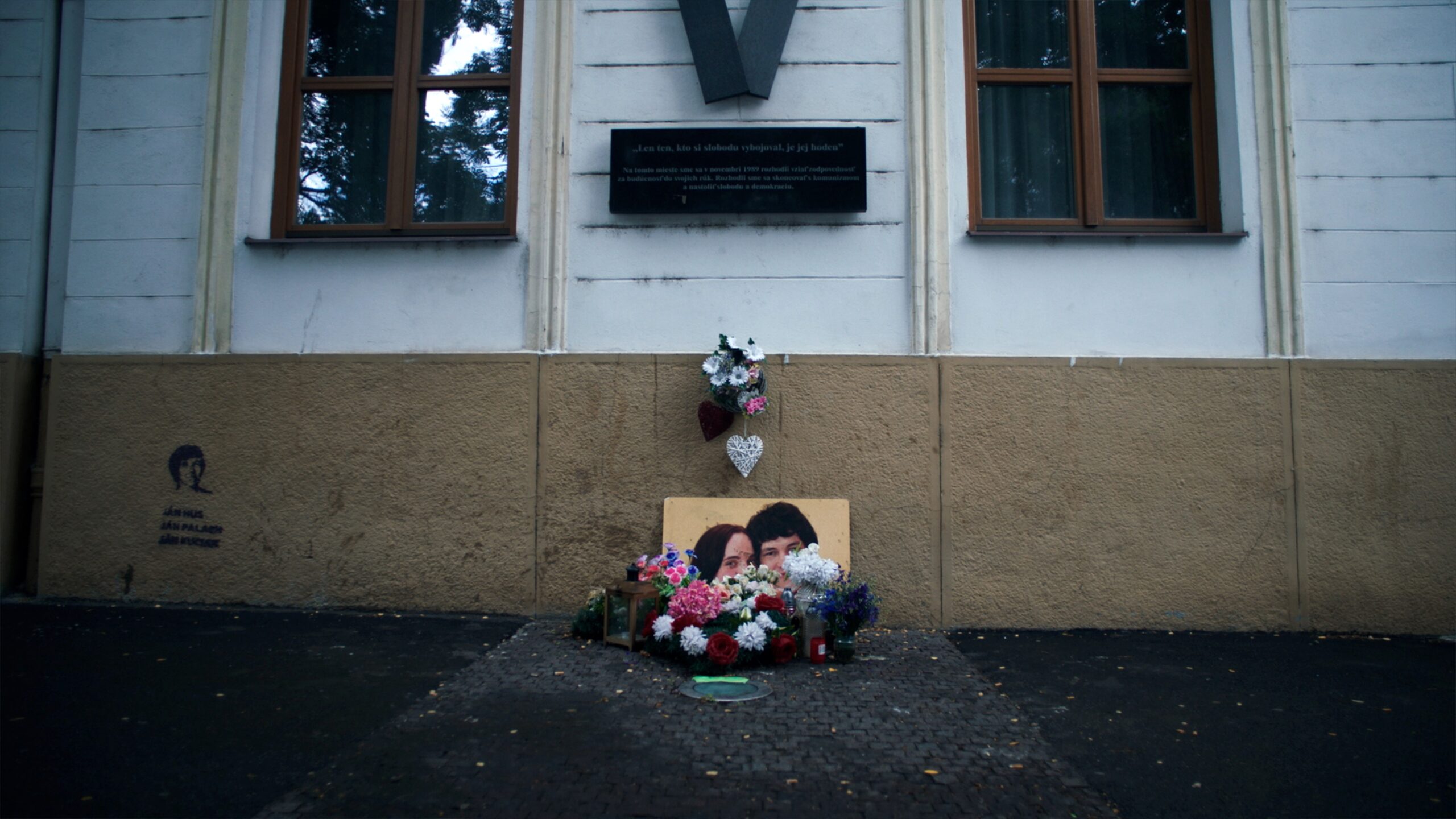In The Killing of a Journalist, it’s almost invisible to see the extraordinariness of the events that led to the upheaval in its narrative or the awakening of the public in Slovakia — the state where investigative journalist Ján Kuciak and his fiance Martina Kušnírová were murdered on an ordinary February 2018 day while enjoying coffee in their home. It was like a mental shrug – “Huh? So… what?” This is what I found myself thinking, astonished that this supposedly hard-hitting documentary about the depths of rot in a state’s conscience simply did not hit me hard. It took me a few minutes to grasp what I had watched and felt — I was numbed to these realities.
While the events it documents and unearths seem mundane to the Indian public, its mere existence as a piece of media may seem like a miracle in a society where Siddique Kappan spent two years in prison without evidence or trial for merely trying to report (or do his job) the Hathras rape case, its quality as a documentary is a hit when it could have easily missed and sufficed as a ‘brave piece of work’.
That a journalist could be killed for speaking truth to power, or that power that should be with the people in a democracy is exercised by their representatives as if they were on a throne of reign — these are the everyday motions of witnessing and being as an Indian citizen in our times. And that is why, the aftertaste of The Killing is inevitably resilient.
While the events it documents and unearths seem mundane to the Indian public, its mere existence as a piece of media may seem like a miracle in a society where Siddique Kappan spent two years in prison without evidence or trial for merely trying to report (or do his job) the Hathras rape case, its quality as a documentary is a hit when it could have easily missed and sufficed as a ‘brave piece of work’.

It starts with the specific, human picture of loss and devastation, wasting no time to establish the gruesomeness of the act. The first frame shows Kuciack and his fiance, Kušnírová, getting into a car after grocery shopping, with the panopticon gaze of a camera surveilling their ordinariness, ready to destroy it. We get a lot of time to dwell on the human cost of seeking and speaking truth to power, as we are shown the fullness of Kuciack’s life beyond his sharp expertise as an investigative journalist who was self-taught yet thorough in his ability to make obscure data tell a memorable story.
The detailed and insightful personal expression is then tied to the big picture of the nation, its sociology, and the chilling rot throughout its spine. We are shown the country coming to the streets, seeing this double murder as the final straw when the realisation hits home: “Okay, now they are ready to even kill.” People demand justice for Kucian, seeing his murder as a new and dangerous symptom of the powerful Marian Kocner (against whose financial fraud and corruption Kucian investigated and wrote extensively) holding the freedom of their country hostage.
Kucian becomes Jánu to us, preparing to get married in May 2018, bickering with his fiance over where they would house their cats and dogs alongside their kids, and sharing a small room with his brother with posters marking their territories. Kuciak’s parents say in the very beginning, “Instead of a wedding, we had a funeral.” This is a technique and lens without novelty, but the craft and expertise of director Matt Sarnecki lie in taking this human picture and transforming it into the mirror of a nation.
Also Read: Watching S.N.S. Sastry’s Documentary ‘I Am 20’ In The 75th Year Of India’s Independence
This is achieved by The Killing being careful in who it hands the mic. The cinematisation of the death of a young couple on the brink of marriage, fighting for a country’s soul – it is a trope that often lends itself to the muddled incorporation of many unrelated people weighing in on the tragedy of it all. But we get to hear only the people who have or can have something meaningful to say because the intent never appears to be dramatisation – it’s documentation. We are spared the theatrical noise, getting clarity by hearing their immediate families, the anchoring voice of journalist Pavla Holcová (who got the tip with 70 terabytes of data with leaked files and evidence that exposed corruption at the highest levels of power), the investigators, and their lawyers.

The detailed and insightful personal expression is then tied to the big picture of the nation, its sociology, and the chilling rot throughout its spine. We are shown the country coming to the streets, seeing this double murder as the final straw when the realisation hits home: “Okay, now they are ready to even kill.” People demand justice for Kucian, seeing his murder as a new and dangerous symptom of the powerful Marian Kocner (against whose financial fraud and corruption Kucian investigated and wrote extensively) holding the freedom of their country hostage. Footage from the protests, speeches of activists and journalists, and press conferences by former Prime Minister Fico, as well as the police chief, mark the tension in the narrative of a country that is beginning to realise they cannot neglect the oligarchy’s death grip on their liberal ideals any longer.
This is a necessity, but it leaves the viewer with questions of socio-political neglect embedded in culture and how Slovakia reached the brink of a failing state: ‘What were the symptoms? The protesting public too had a role to play in letting things escalate, didn’t they?’ So many people had to keep looking away for Kucian to stare death in the face simply because he refused to not witness.
Also Read: Jharia: A Documentary On Simon Baba – Farmer, Thinker And The ‘Waterman Of Jharkhand’
Perhaps Sarnecki has these questions too at the back of his mind, so he brings the human angle back into focus within the height of this narrative tension by taking us to the day and scene of Kucian’s and Kušnírová’s deaths. We are shown the footage of the police investigation where the hired hands for Kocner, suspects in the investigation, had to re-enact in their confessions what happened on the day of the killing. What works in this regard is again the choice to not sensationalise this pensive, gruesome moment with dramatic music or repetition.
The anxieties of a nation realising the resignation of the people in power after their public protests are nowhere near the end of the journey their society must make to awaken and do better. The new command is incompetent, and they are looking almost nostalgically towards the leadership under whom the killing and the rot took place. Reality spins in circles as we realise this is how Slovakia got here in the first place, justice is nowhere near in sight, and as we may know from experience in India – ‘if not him, then who’ is a disturbing reason to let a country descend to an autocracy of corruption.
Kucian was killed on his knees, with his hands in front of him – this detail discomforts our memory all on its own and is not embellished by Sarnecki with anything unnecessary to accentuate it. The footage moves on to Kušnírová quickly. She died with her blood spattering on the ground as she fell backwards after a single shot in the same room where their laptops lay on the table. We had been told earlier, and it is never repeated as a detail to evoke our tears artificially – she had been browsing through wedding dresses on her laptop that day. The facts are striking on their own, and The Killing wants us to remember how reality becomes like dystopian fiction when a society fails to act in time.

All this is testimony to Sarnecki’s expertise and his precision as a documentary maker, owing to Killing Pavel, his previous work in the same space. He skilfully draws us back to the picture of the state, showing us the kind of digital data Kucian may have had on the people in power, with text messages between Kocner and judges, the secretary of state, and more. The intricacies of this data and the prosecution’s commentary about their strategy in the murder trial mark the last act of the documentary, at which point one hopes for a stronger pace. While the slow and frustrating burn of injustice, as well as its exhaustion, deserve to be highlighted, a better grip on the pace would have made memorable moments and instances from The Killing stand out stronger.
Also Read: But What Was She Wearing?: A Documentary On The Ground Realities Of Workplace Sexual Harassment
The ending is realistic, pulling no dramatic punches. This is not to say that it doesn’t hit hard.
The anxieties of a nation realising the resignation of the people in power after their public protests are nowhere near the end of the journey their society must make to awaken and do better. The new command is incompetent, and they are looking almost nostalgically towards the leadership under whom the killing and the rot took place. Reality spins in circles as we realise this is how Slovakia got here in the first place, justice is nowhere near in sight, and as we may know from experience in India – ‘if not him, then who’ is a disturbing reason to let a country descend to an autocracy of corruption.




